Maya News Updates 2007, No. 28: Copan - Discovery of a Richly Furnished Tomb in the El Bosque Area (Extended May 14 & 19, 2007, Corrected May 19, 2007)
Today, Sunday May 13, 2007, the online edition of the Honduran daily newspaper Diario La Prensa reports on the recent discovery of a richly furnished tomb found inside a building in a compound located in the El Bosque area in Copan, Honduras. The El Bosque area lies outside of the center of Copan and the discovery was made by the archaeological team of the PAPAC, Proyecto Arqueológico Planificación de la Antigua Ciudad de Copán, led by Allan Maca of Colgate University (edited by MNU):
Una tumba fue hallada fuera del área de la Acrópolis por arqueólogos estadounidenses: Encuentran vestigios mayas - Los investigadores estadounidenses, junto a hondureños, siguen realizando las excavaciones:
Copán Ruinas Un hallazgo impresionante hicieron ayer los arqueólogos estadounidenses al encontrar una osamenta en un área a 400 metros de donde se ubica la Acrópolis. El descubrimiento fue logrado mediante estudios realizados en el marco del Proyecto Arqueológico Planificación de la Antigua Ciudad de Copán, Papac, a cargo de Allan Maca de la universidad Colgate de Estados Unidos. El proyecto comenzó en 1995 con el trabajo en diversas áreas, entre ellos la zona conocida como El Bosque, ubicada a unos 400 metros de la Acrópolis. Los investigadores presumen que la osamenta era de un alto personaje de la antigua civilización maya. El hecho ha llamado la atención, pues se evidenció la urgente necesidad de crear un programa de protección en los alrededores del parque.
Antecedentes La zona del hallazgo es un distintivo complejo arquitectónico dinástico, por lo cual se presume que la osamenta encontrada pertenece a un importante miembro de la familia real. La tumba fue excavada y continúa siendo estudiada, el hallazgo es considerado uno de los más raros dentro de la civilización maya. Para lograr estos resultados, el Instituto Hondureño de Antropología e Historia extendió el permiso para realizar las investigaciones en el núcleo del edificio. Excavaron tres metros en el centro, donde se encontró una tapadera, un atrio de tres paredes talladas, se amplió el pozo y se encontró un embudo como banca y rasgos extraños. La profundidad de las excavaciones evidencia una pared al lado oeste, completamente colapsada; esto llevó a realizar estudios internos y externos que muestran los cuatro nichos en las esquinas. “Aquí nadie sabía nada, nadie conoce la historia de los asentamientos en el Valle, por lo que hoy hemos efectuado una reconstrucción digital con mapas que nos revelan la ciudad maya”, manifestó Allan Maca.
Otras piezas También se han encontrado vasijas policromadas nunca vistas; éste es el único ejemplo del siglo VII, es raro y está asociado a un pectoral de jade, lo cual hace presumir que las piezas dan una idea o señal del título o papel social o político que pudo tener esa persona sepultada en la zona. “Es lo más impresionante que he visto en mi vida, este trabajo ha requerido tiempo”, afirmó Maca durante su exposición. Los trabajos continúan en la zona suroeste del Bosque K11-6, en cuyos montículos podría encontrarse nuevos descubrimientos, contar con evidencias de esta tumba, considerado el hallazgo geomorfológico y del medio ambiente más importante de la historia. Las paredes pintadas en rojo, el diseño raro de la bóveda y la plataforma muestran que se construyó pensando en volver a entrar a la tumba. Además, la postura del individuo encontrado refleja que estaba sentado de piernas cruzadas; el hallazgo de material textil demuestra que fue amarrado.El análisis del cráneo refleja que se trata de un individuo de unos cincuenta años, de una fisonomía rara por los rasgos de sus huesos, por lo cual se supone que presentaba varias patologías. Parece una persona caminando con dolor, lo cual significa que no podía usar su brazo; además, el estudio refleja que presentaba infección permanente en la cabeza y osteoporosis.
Al rescate de la historia Autoridades de Cultura y Turismo afirman que el Gobierno hace lo posible por garantizar que las evidencias de los antepasados no se pierdan. El Estado está en proceso de recuperar los terrenos que pertenecieron a la antigua ciudad maya, a fin de conservar estos espacios (Source: La Prensa).
The Diario La Prensa also provided a gallery of four additional photographs to accompany the online report of this important discovery (figure headings by the blog author):
Location of the building that the contains the tomb in the El Bosque area, Copan, Honduras
The body as found in the richly furnished tomb. Note the Spondylus shell above the tibia and fibula bones and the series of beads to the left of the femur
A series of ceramic vessels resembling Copador style found within the tomb
Still photograph of a large ceramic vessel resembling the Copador style (thanks Allan for correcting me on this!) found inside the tomb. The design on the body of the vessel illustrates two elaborately dressed human figures alternating with feathered serpents. The rim text is a typical Copador pseudo-glyph version of the common standardized dedicatory formula on Classic Maya vessels (in relation to this style of glyph texts, the term "pseudo-glyph" was first used by Longyear in his 1944 study on the archaeology of El Salvador and his 1952 study of the Copan ceramics)
The PAPAC (Proyecto Arqueológico Planificación de la Antigua Ciudad de Copán) has its own website at http://www.papacweb.org. The website provides much information on the excavation of the above tomb and additionally provides a host of computer generated reconstructions (visit the "Media" section).
Addendum (May 14, 2007): The online edition of the Honduran daily newspaper La Prensa already posted a short notice on the above archaeological discovery in the El Bosque area in Copan on Saturday May 12, 2007. Here follows that notice (edited by MNU):
Descubren tumba maya en Honduras - Un grupo de científicos descubrió una fina tumba de la civilización maya, que desapareció misteriosamente tras alcanzar su mayor desarrollo entre los años 250 y 900 después de Cristo en lo que ahora son los territorios de México, Belice, Guatemala, El Salvador y Honduras. El hallazgo se produjo en la zona conocida como El Bosque del parque arqueológico de Copán, a unos 240 kilómetros al oeste de Tegucigalpa, en la frontera con Guatemala. “Aún no sabemos si los restos encontrados son de un gobernante o un sacerdote, pero sí se trata de un miembro de la estructura política de la dinastía maya”, dijo el sábado en un comunicado el Instituto de Antropología e Historia, Ihah. El descubrimiento lo atribuyó la institución al arqueólogo estadounidense Allan Maca de la Universidad Colgate de Nueva York, que investiga Copán desde hace dos años.
En la fosa, que probablemente tiene una data cercana al año 650 D.C., habían ofrendas florales, collares de jade y vasijas mayas increíblemente raras. “Consideramos que es una de las construcciones funerarias más finas descubierta hasta ahora en Copán”, añadió. El Ihah indicó que los resultados de la investigación fueron expuestos el viernes en Copán al ministro de Cultura y Artes, Rodolfo Fasquelle; al gerente de esa entidad, Darío Euraque; al alcalde de la localidad Mauricio Arias, y al antropólogo francés René Viel. La tumba fue hallada en enero de 2005 en varios promontorios que rodean el parque arqueológico, pero su descubrimiento se reveló hasta ahora tras las investigaciones adelantadas.
El Ihah indicó que continúa excavando Copán como parte de las tareas del gobierno de conservar y proteger esa región hondureña, donde hay numerosas estelas, altares, plazas, pirámides y figuras mayas de piedra. En 1989, los expertos hallaron allí el templo Rosalila, uno de los mejores preservados de la cultura maya, y en 1993, descubrieron el sepulcro del primer rey maya Yax K'uk' Mo' (Quetzal Guacamayo). En el 2000, encontraron también una tumba con los restos de otro gobernante indígena. Las ruinas de Copán fueron descubiertas por el español Diego García de Palacio en 1576 y redescubiertas en 1830. Copán fue el centro de la ciencia y cultura de los mayas, cuya civilización logró grandes adelantos en materia de astronomía y matemáticas, construyó alrededor de 116 enormes ciudades y desarrolló el más complejo sistema de escritura del Nuevo Mundo. Las Naciones Unidas declararon las ruinas en 1981 como patrimonio cultural de la humanidad (Source: La Prensa).
Addendum 2: On May 17, 2007, the news service of National Geographic posted the following English language report on the same discovery (edited by MNU):
Ancient Maya Tomb Found: Upright Skeleton, Unusual Location - Archaeologists working in Honduras have discovered an entombed human skeleton of an elite member of the ancient Maya Empire that may help unravel some longstanding mysteries of the vanished culture.
The remains, seated in an upright position in an unusual tomb and flanked by shells, pottery, vessels, and jade adornments, suggest a surprisingly diverse culture and complex political system in the influential Maya city of Copán around A.D. 650. Located at the western edge of modern-day Honduras near the border with Guatemala, Copán, was one of the most important Maya sites, flourishing between the fifth and ninth centuries A.D. But until now, much about the political makeup and cultural range of the city—famous for its funerary slabs—has been poorly understood.
The position of the body, the structure of the tomb, and several unexpected artifacts suggest the interred individual was a political or priestly figure, said discoverer Allan Maca, an archaeologist at Colgate University in New York State. The entombed individual was found with "a jade pectoral hung from a necklace of dozens of jade beads of various sizes," Maca said. Because jade was a precious commodity, he added, the jewels represent "a level of control over economic resources."
"The incised design on the pectoral likely represents a political title or social affiliation that links this individual to other major sites around the city," Maca said. The remains belong to a 50-year-old man with various illnesses. He had poor use of his left arm, poor arterial flow through his upper spinal cord, and a chronic infection of the skull known as mastoiditis, according to a bioarchaeological analysis by Katherine Miller of Arizona State University.
Maca discovered the tomb in 2005 in the Copán Archaeological park. But Maca—whose work was funded by the National Geographic Society's Committee for Research and Exploration—only announced his findings last week, in conjunction with officials from the Honduran Institute of Anthropology and History, after months of excavation. "The tomb is characterized by a split vault created by interlocking lintels [load-bearing horizontal supports]," said Maca, who is also the director of the Project for the Planning of Ancient Copán.
The remains, seated in an upright position in an unusual tomb and flanked by shells, pottery, vessels, and jade adornments, suggest a surprisingly diverse culture and complex political system in the influential Maya city of Copán around A.D. 650. Located at the western edge of modern-day Honduras near the border with Guatemala, Copán, was one of the most important Maya sites, flourishing between the fifth and ninth centuries A.D. But until now, much about the political makeup and cultural range of the city—famous for its funerary slabs—has been poorly understood.
The position of the body, the structure of the tomb, and several unexpected artifacts suggest the interred individual was a political or priestly figure, said discoverer Allan Maca, an archaeologist at Colgate University in New York State. The entombed individual was found with "a jade pectoral hung from a necklace of dozens of jade beads of various sizes," Maca said. Because jade was a precious commodity, he added, the jewels represent "a level of control over economic resources."
"The incised design on the pectoral likely represents a political title or social affiliation that links this individual to other major sites around the city," Maca said. The remains belong to a 50-year-old man with various illnesses. He had poor use of his left arm, poor arterial flow through his upper spinal cord, and a chronic infection of the skull known as mastoiditis, according to a bioarchaeological analysis by Katherine Miller of Arizona State University.
Maca discovered the tomb in 2005 in the Copán Archaeological park. But Maca—whose work was funded by the National Geographic Society's Committee for Research and Exploration—only announced his findings last week, in conjunction with officials from the Honduran Institute of Anthropology and History, after months of excavation. "The tomb is characterized by a split vault created by interlocking lintels [load-bearing horizontal supports]," said Maca, who is also the director of the Project for the Planning of Ancient Copán.
"The chamber was accessed from above by a stuccoed stone chute that descends from the surface of the temple," he continued. Maca said the features allowed the tomb to be "reentered years after the original interment, for purposes of ancestor veneration." The tomb's location, some 1,300 feet (400 meters) west of the Acropolis, Copán's ceremonial core, was unexpected, Maca added. "The design is without precedent in the Maya area and is the first elaborate tomb construction to be discovered outside the ceremonial center of Copán," he said.
The grandiose tombs belonging to members of the Copán dynasty, royal court, and royal family are typically found in Copán's Acropolis, Maca explained. Copán archaeologists have focused their research in the central area for many recent decades as well as much of the 19th century. "As we begin to think more broadly about the great extent of the royal city, and about how to protect it against modern looting and population growth, we are coming to understand that the dynasty manifested its power in sectors of the Copán Valley that have never been explored," Maca said.
There are other oddities to the tomb. The position of the buried individual—seated with legs crossed—was not common in Copán or in the Maya lowlands during the Classic period, which lasted from about A.D. 300 to 900. And several vessels found in the tomb, made in sets specifically for the burial, bear "a type of false or alternative hieroglyphics unlike those used by the ancient Maya," he said. Some of the pottery vessels likely came from the south near present-day El Salvador, Maca added.
"Thus it is unlikely that these were made in Copán and probable that they signify some sort of cultural affiliation with that region," he said. Also found in the tomb were seashells laid in a pattern that appears to represent a kind of cosmological map and may be representative of the waters in Maya creation mythology, Maca said. The shells must have arrived to the region through commercial exchanges with the coast, Maca said. The findings bring into clearer focus a picture of a Classic-period Copán society that was culturally diverse.
The discovery provides "an unusual archaeological context that helps expand our knowledge of the sociopolitical and cultural complexity of the ancient city and of the funerary and ritual landscape of the Copán Valley during the seventh century A.D.," Maca said. Dario Euraque, director of the Honduran Institute of Anthropology and History, said Maca's findings were significant for a number of reasons. "Mainly, this is the first tomb to be found outside the principal monuments where all funeral sites are located," he said. "We never thought we would find any in the Bosque, which is along the periphery of Copán." He agreed that the artifacts and tomb characteristics were not representative of the Maya culture. "This goes against theories that all populations in the Copán Valley were uniquely Mayan," he said. "There appears to have been a cultural mix." (written by Kelly Hearn; source: National Geographic News)
The grandiose tombs belonging to members of the Copán dynasty, royal court, and royal family are typically found in Copán's Acropolis, Maca explained. Copán archaeologists have focused their research in the central area for many recent decades as well as much of the 19th century. "As we begin to think more broadly about the great extent of the royal city, and about how to protect it against modern looting and population growth, we are coming to understand that the dynasty manifested its power in sectors of the Copán Valley that have never been explored," Maca said.
There are other oddities to the tomb. The position of the buried individual—seated with legs crossed—was not common in Copán or in the Maya lowlands during the Classic period, which lasted from about A.D. 300 to 900. And several vessels found in the tomb, made in sets specifically for the burial, bear "a type of false or alternative hieroglyphics unlike those used by the ancient Maya," he said. Some of the pottery vessels likely came from the south near present-day El Salvador, Maca added.
"Thus it is unlikely that these were made in Copán and probable that they signify some sort of cultural affiliation with that region," he said. Also found in the tomb were seashells laid in a pattern that appears to represent a kind of cosmological map and may be representative of the waters in Maya creation mythology, Maca said. The shells must have arrived to the region through commercial exchanges with the coast, Maca said. The findings bring into clearer focus a picture of a Classic-period Copán society that was culturally diverse.
The discovery provides "an unusual archaeological context that helps expand our knowledge of the sociopolitical and cultural complexity of the ancient city and of the funerary and ritual landscape of the Copán Valley during the seventh century A.D.," Maca said. Dario Euraque, director of the Honduran Institute of Anthropology and History, said Maca's findings were significant for a number of reasons. "Mainly, this is the first tomb to be found outside the principal monuments where all funeral sites are located," he said. "We never thought we would find any in the Bosque, which is along the periphery of Copán." He agreed that the artifacts and tomb characteristics were not representative of the Maya culture. "This goes against theories that all populations in the Copán Valley were uniquely Mayan," he said. "There appears to have been a cultural mix." (written by Kelly Hearn; source: National Geographic News)


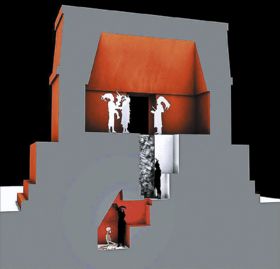

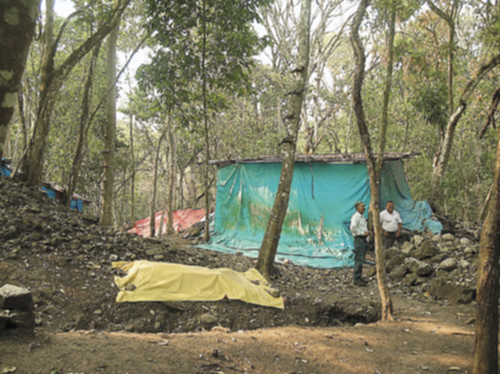
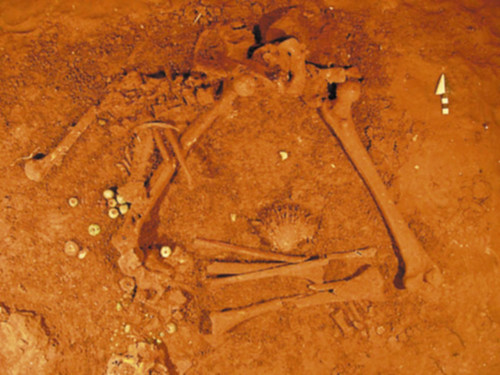
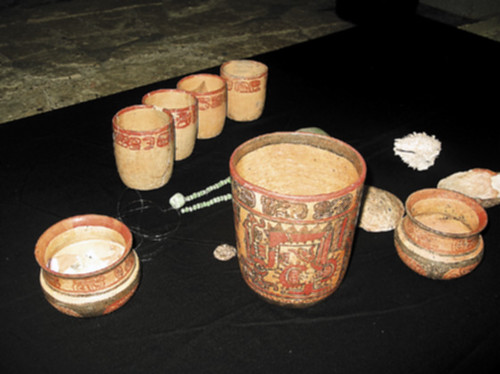
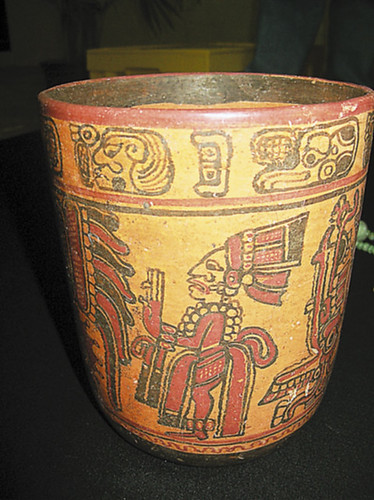


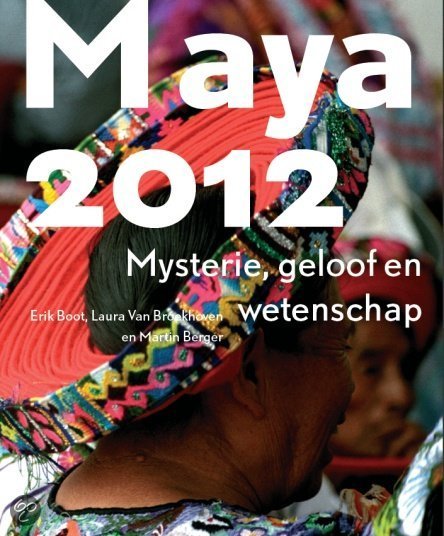



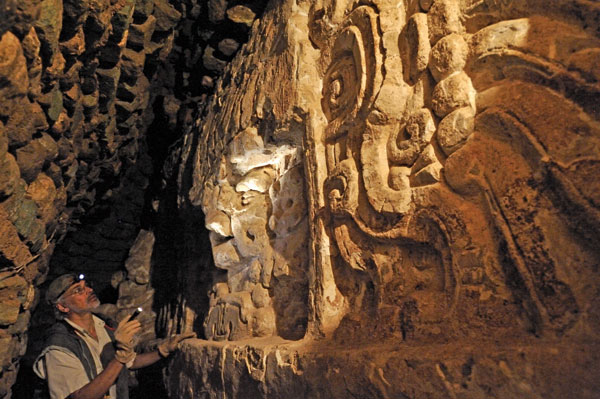
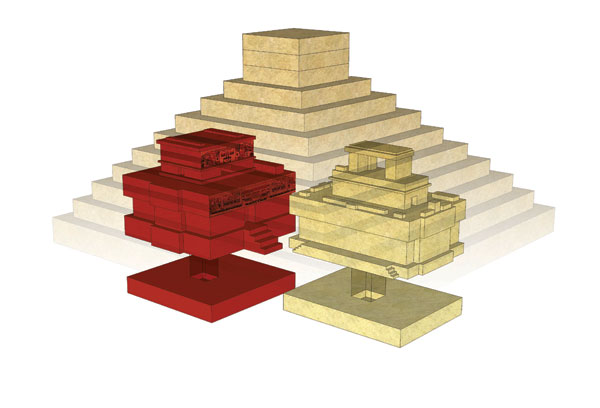
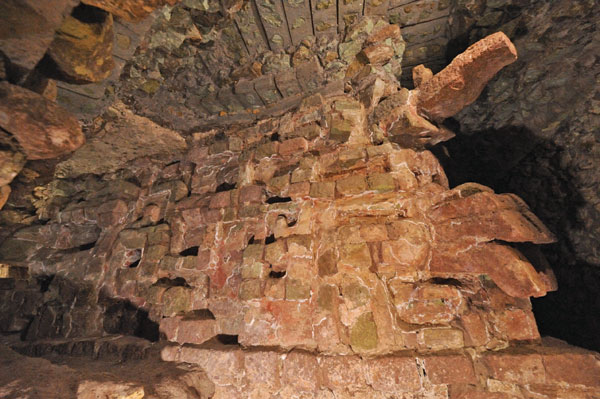





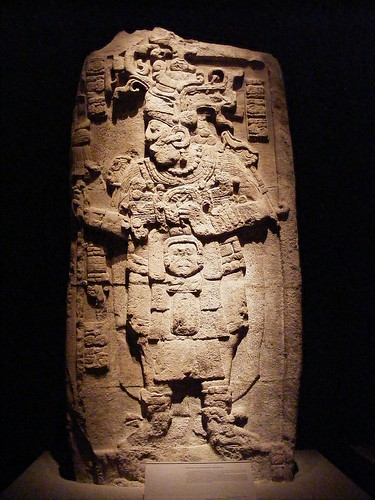


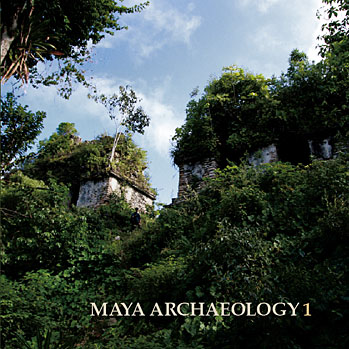









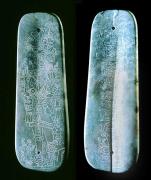
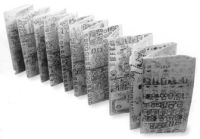

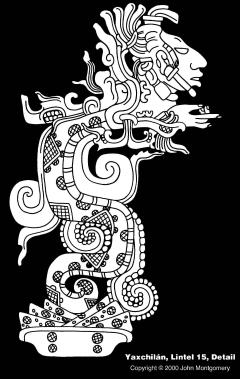

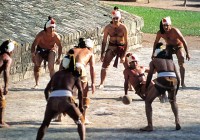


1 Comments:
Hello! The vessels found in this tomb are not Copador. There are some resemblances, but for now the type and regional provenance of these pots
are unknown. We await further analysis. --Allan Maca, Colgate University and PAPAC (Honduras)
Post a Comment
<< Home